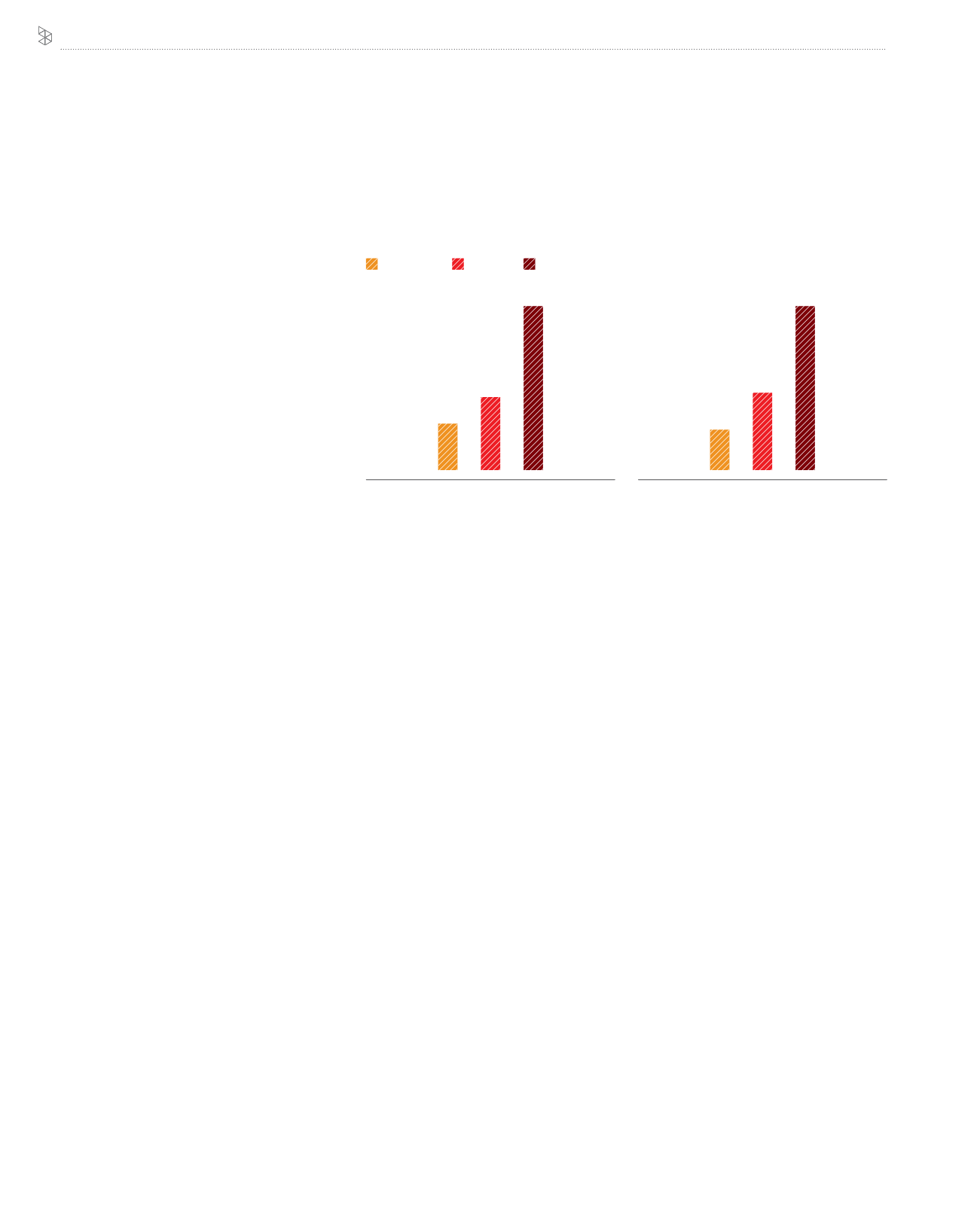

NATIONAL CONTRIBUTION REPORT
80
Axiata Group Berhad | Sustainability & National Contribution Report 2016
In Support of the National Agenda
Agriculture and Women’s Employment,
identifiedaspriorities under theBangladesh
Government’s National Agenda, are areas
that stand to benefit significantly from
the growth of mobile connectivity and
the use of digital technology. These areas
represent opportunities for Robi to play
a role in advancing Bangladesh’s national
goals and to contribute to society. The
following section provides an overview
of these national priorities and Robi’s
contribution towards them.
Agriculture
Growth of the agriculture sector is a
priority in the Seventh Five Year Plan
2016-2020 for Bangladesh. Promoting the
effective use of ICT in agriculture is one of
the major objectives of the Seventh Five
Year Plan, as prioritised by the Ministry of
Agriculture. Robi launched “Mobile Krishe”
to promote modernised farming and
enable farmers to achieve sustainable high
yield on their crops.
Agriculture reduces poverty and increases
rural incomes
In 2015, agriculture contributed to
15.6% of GDP and employed 50% of the
labour force. The sector helped reduce
Bangladesh’s poverty levels from 48.9% in
2000 to 31.5% by 2010, with over 87% of
the rural population deriving a portion of
their income from agriculture (see Figure
4). Two-thirds of rural households rely on
both farm and non-farm incomes. A 10%
increase in farm incomes generates a 6%
increase in non-farm incomes through
economy-wide forward and backward
linkages.
Since 1995, the sector has had one of the
fastest rates of productivity growths in the
world, averaging 2.7% per year, second
only to China, and reaching a high of 5%
in recent years.
ICT increases productivity of agriculture
ICT is being considered as a tool to
expedite credit delivery to farmers by
paying Government subsidies directly
through mobile money. It is also being used
as a platform to disseminate important
agricultural information to farmers.
A key challenge that must be overcome
is making technology available and
accessible to rural Bangladeshis, especially
for farmers given their low rate of literacy.
Services that are available include:
•
weather forecasting
•
production and cultivation advice
•
disease and insect information
through e-Krishok provided by civil
society organisations
•
up-to-date price information
“MobileKrishe”,afertiliserrecommendation
software, has been implemented as a
collaboration between Robi and Grameen
Intel Social Business Ltd. This initiative
aims to help farmers achieve high yields
from their crops sustainably through the
application of this mAgriculture-based
modern farming method.
Women’s Employment
The Seventh Five Year Plan 2016-2020
highlights women’s employment as a
strategic goal. Bangladesh projects that it
is able to increase its GDP growth by 1.6%
if female labour participation increases
from 33.7% to 82.0%, a figure on par with
the male labour participation rate. ICT
enables women to access information
related to development opportunities and
services, learning and networking, and has
an important role in outsourcing business
opportunities at different stages of the
value chain.
2010
18%
26%
56%
% of GDP
2015
16%
28%
56%
Figure 4: GDP contribution by sector
Agriculture
Industry
Services
Source: Seventh Five Year Plan FY2016-FY2020, Planning Commission of Bangladesh
NATIONAL CONTRIBUTION
REPORT









